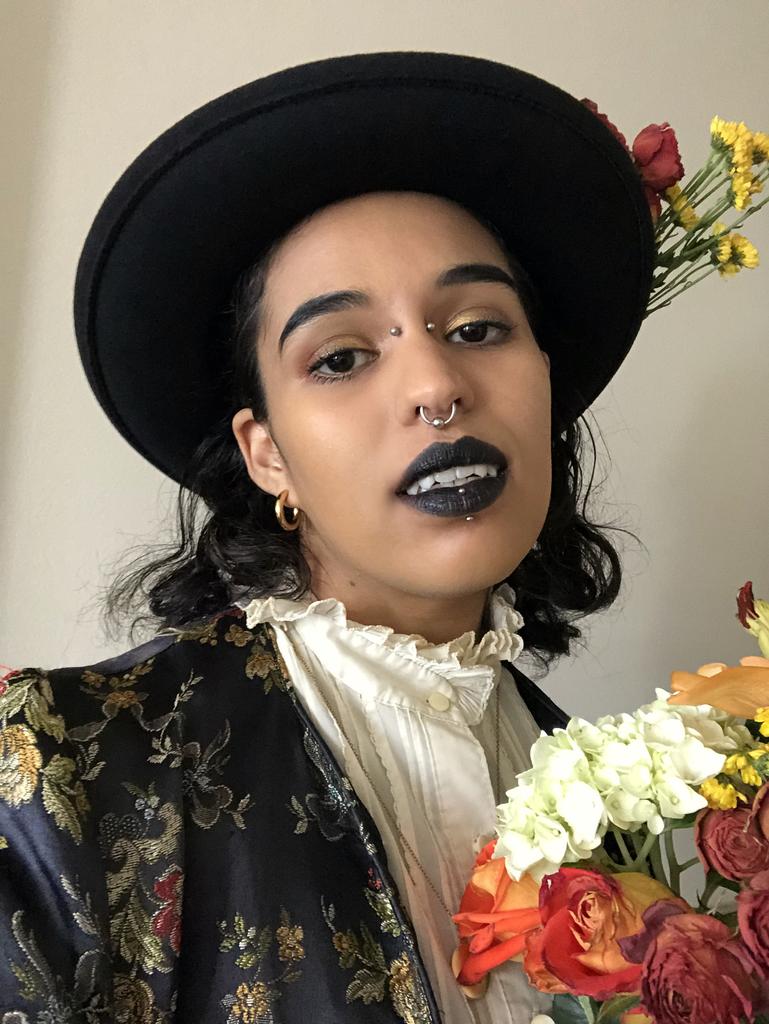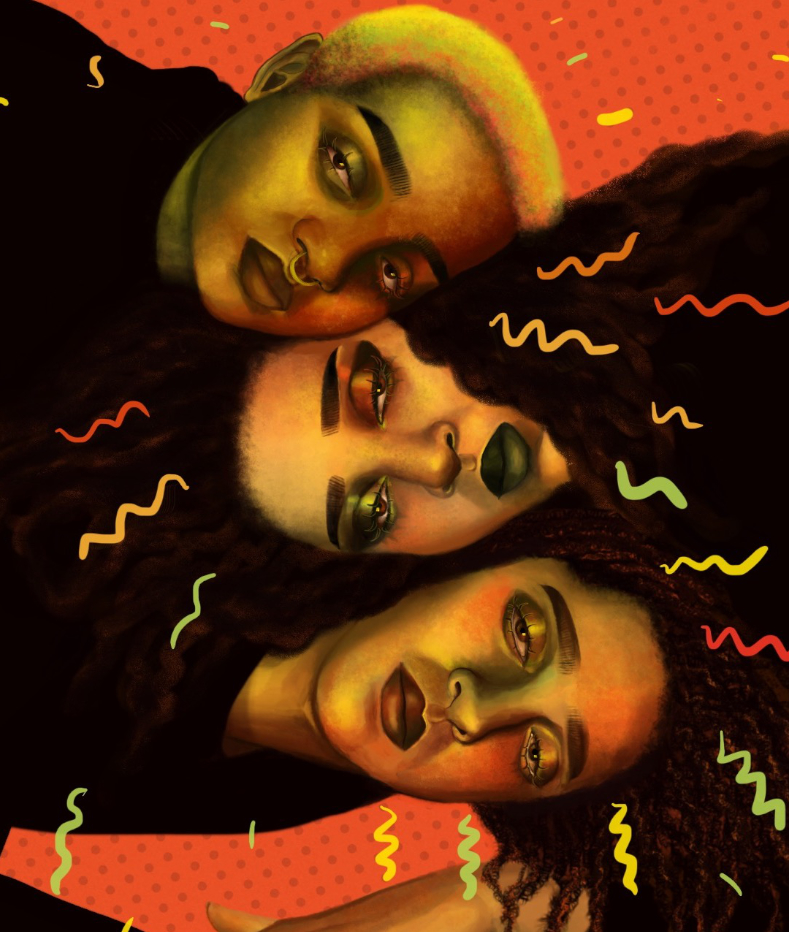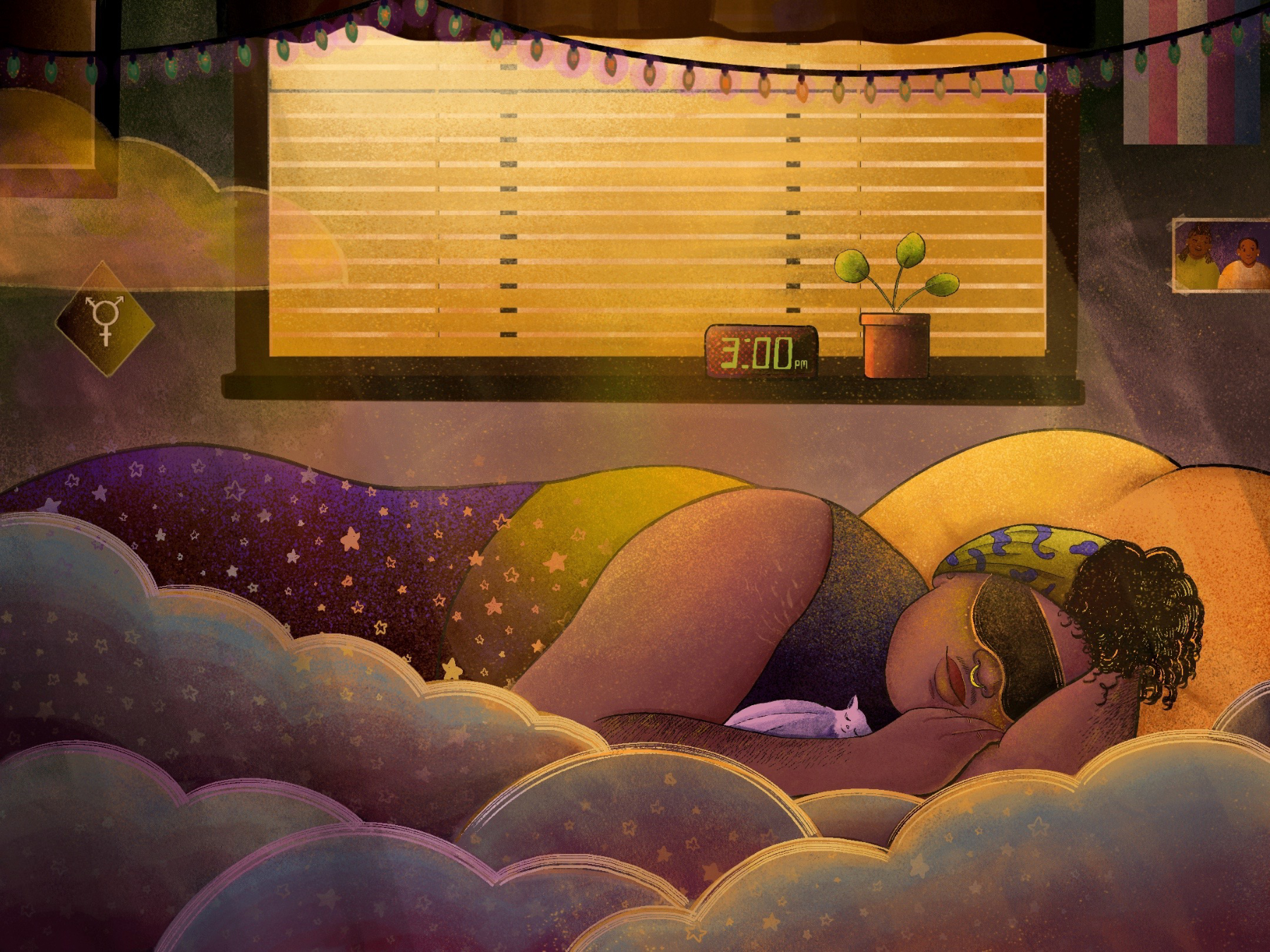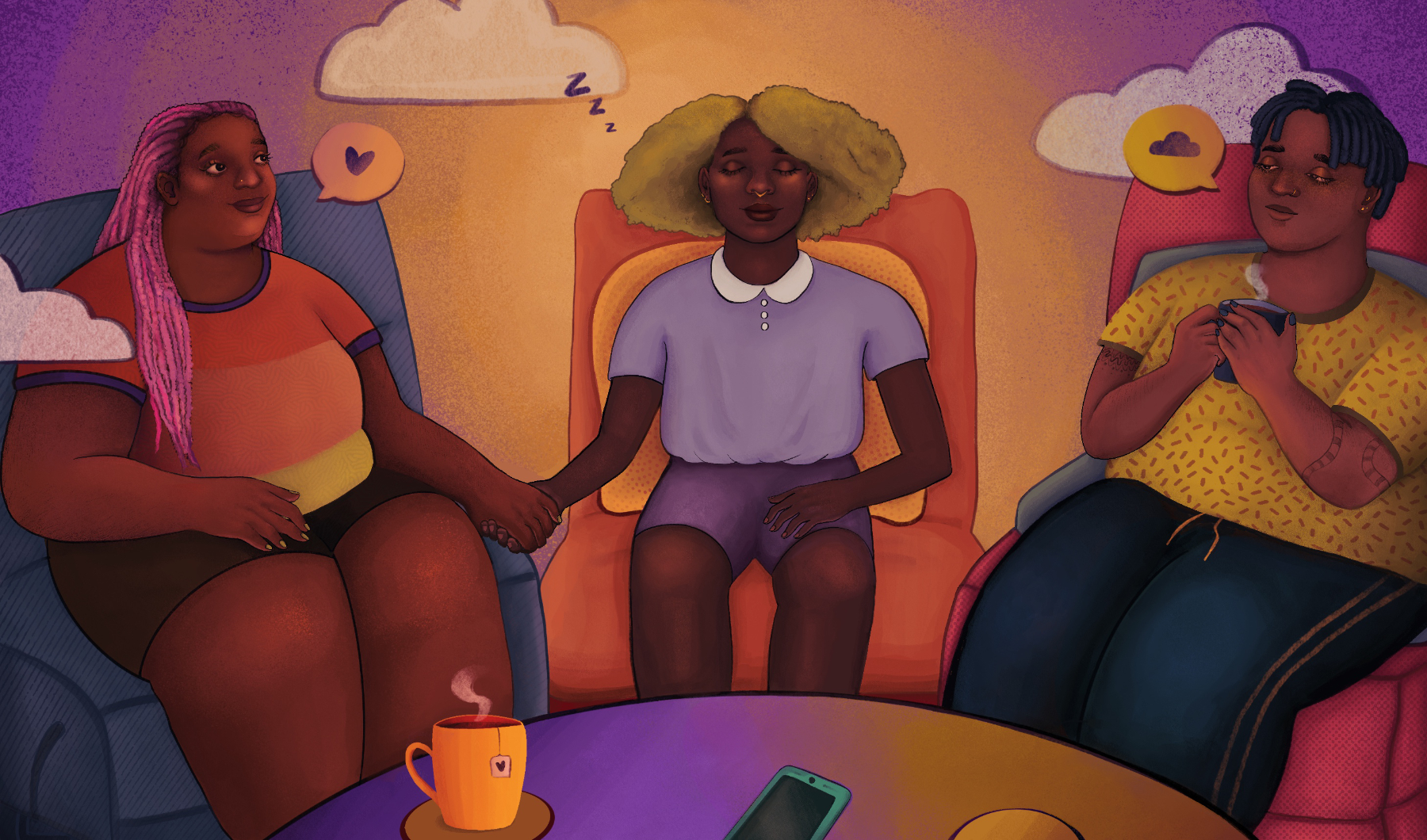April 16, 2021
Disabled And Here illustrator feature: Jonathan
Hi! How would you like to introduce yourself? Hi! I’m Jonathan / Eden, a South African-American artist and writer living with two personality disorders and idiopathic hypersomnia. I spend a lot of my time dreaming (literally and figuratively) and imagining futures of liberation, particularly in regards to Mad, Trans, and Black futurity. I’m currently working on a comic about time travel. My pronouns are he/him/his with the occasional they.

Please tell us more about the comic! Absolutely! It’s a horror comic about a trio who cross centuries to help each other heal. They build a brighter future alongside the unquiet dead and find community in unlikely places. It’s still being written and I’m hoping to release it as a webcomic later this year.
That is DELIGHTFUL. How did you get into art and illustration? How would you describe your style? I’ve been making art for as long as I can remember, and mostly it was just fun. I really enjoyed drawing and painting and coming up with new worlds where things that weren’t—or didn’t feel—possible in my life could be put on a page and made real. As I got older, art and writing became a way for me to process the things I couldn’t or didn’t know how to talk about, and now I use it to imagine what futures without oppression might feel like. If ableism, racism and transphobia didn’t exist—how might we get there together? Art gives me hope when nothing else does.
I think my style is always changing, and I like embracing the flux of that. Most of my work is some combination of horror and surrealism, and that’s stayed constant throughout my life. I’m a goth, but I love saturated colors and big dreamy optimistic possibilities, which I suppose encapsulates my style pretty well! Even when it comes to my own presentation and ongoing body modification, I try to embody that. I identify strongly with monstrosity and, ultimately, want to look like a demon, but a demon who really just wants to float on a technicolor dream cloud with his friends. [Laughs]

How do your lived experiences impact your art in general? I think my lived experiences are always informing my art and my art is always informing my lived experiences. Because I make comics, my art is so inextricably tied to my writing, and vice versa, but I tell stories about characters who are like me, especially in regards to Madness. Having BPD and NPD, those are two personality disorders that have so much stigma attached to them, and little to no positive representation in the media because people don’t quite understand personality disorders as a whole.
In my own life, I still don’t know how to navigate that reality. I’ve met people who were so offended that I could accept having psychiatric diagnoses they deemed “horrible” and who’ve tried to argue, genuinely argue with me, and say I couldn’t possibly have those things because I wasn’t well, what they thought being Borderline or Narcissistic or someone who experiences psychosis must be.
Most days I’m too afraid to talk about any of it, so I try and write Mad characters whose intimate lives aren’t defined by psychiatric or clinical terms, who don’t have that sane gaze on them all the time, and are instead trying to create new worlds for themselves, usually much gentler and more loving worlds that are rooted in community and care. By writing those characters, I’m able to believe a little bit more in that kind of a future for myself and the people I love.
Along those lines…if we imagine disability dreams and futures, what might your ideal life be like in a better world? My ideal life in a better world would be one where I really and truly could just sleep, because I love to sleep and love to dream but have been taught to be ashamed of that because of my sleep disorder. Sleep and rest are so devalued under capitalism, so having idiopathic hypersomnia and needing to sleep twelve, fifteen hours or more is seen as somehow unforgivably “lazy.” Especially when I wake up and am still sleepy, barely functioning and in need of a nap!

I crave and need sleep constantly, and would love to live in a world where I could get the sleep my bodymind needs without being told I’m sleeping too much. I mean, if your impulse is to judge someone for needing lots of sleep or lots of rest—why? What have you been taught to believe about your own need to rest? We all deserve to rest!
I think also when it comes to my brain fog and memory problems or when I struggle to communicate, in my dream world that would be received differently. When I get my words mixed up or stop making “sense,” when I can’t remember what I did a few seconds ago or forget ever having seen my favorite movies, instead of that being disappointing or frustrating, I’d have entirely new ways of connecting with others that wouldn’t even necessarily rely on language or individual memory. Maybe in my dream world I’d just be able to communicate telepathically. [Laughs]
Lastly, my ideal life in a better world would be one where the knowledge and experiences of Mad and neurodivergent people were recognized and celebrated, and it’d be a world where I could go days without ever having to interact with the sane or able world in any capacity unless I chose to.
It would be a life of such abundance! I’d have an abundance of sleep, an abundance of joy and love and healing in community and there’d just be such boundless possibility everywhere.
Is there a dream project that you’d love to work on? I’d love to work on a project with other Mad folks, and often dream about that and wonder what futures we might collectively and separately imagine, and where those futures would meet and where they’d diverge. Beyond any sort of project, I also just crave that kind of community. Otherwise, I think I’m currently working on my dream projects, which is such a joy!

Aww, yay! What would you like to wrap up with? Recently, I’ve been focusing a lot of my energy around learning as much as I can about the people who came before me. So often, I get stuck in despair and feelings of isolation, terrified that things will never get better or that I’m alone, but then I remember that I’m connected to such rich, generative, expansive histories. There have always been people who have dreamed of the future and used those dreams to change their present, and I want to hold on to that. The more I think about time, the more I can feel pasts, presents and futures converging.
I’ve also been reflecting on what it means to be an impossibility. Audre Lorde wrote a poem called “A Litany for Survival” where she writes about never being “meant to survive,” and I think about that all the time. I’m not supposed to be here! But I am, and there’s something really sacred and important about that which pulls me towards the work I do and necessitates that I make art that engages with the future.
When we make art, we dare to dream, and in dreaming, we can create new worlds. We can imagine possibilities beyond our current reality, and use those dreams to actively change and shape the world that we experience. What would it mean to imagine life without the structural violence and oppression we face daily? What would it mean to imagine ourselves beyond that violence? And to know that we're not, and have never been, alone in those dreams?

YES. What are the best ways to support you and your work going forward? I would really like people to examine their language and beliefs and to interrogate internalized and externalized oppression of all kinds. Next time someone uses a specific disability experience to insult or delegitimize someone, or starts talking about a specific diagnosis pejoratively, you can support me by directly intervening and calling that out. Educate yourself on anti-racism and commit to supporting the lives of QTBIPOC however you can.
My work and ongoing projects can all be found on my website. I’m rarely active on social media, but you can follow my art on Instagram @jonathaneden_. I’m currently in the process of starting a Patreon, but in the meantime, folks can support me financially by buying my prints or donating directly to my PayPal.
April 24, 2025: support links have been updated, as Jonathan has updated his professional name and social media handles.